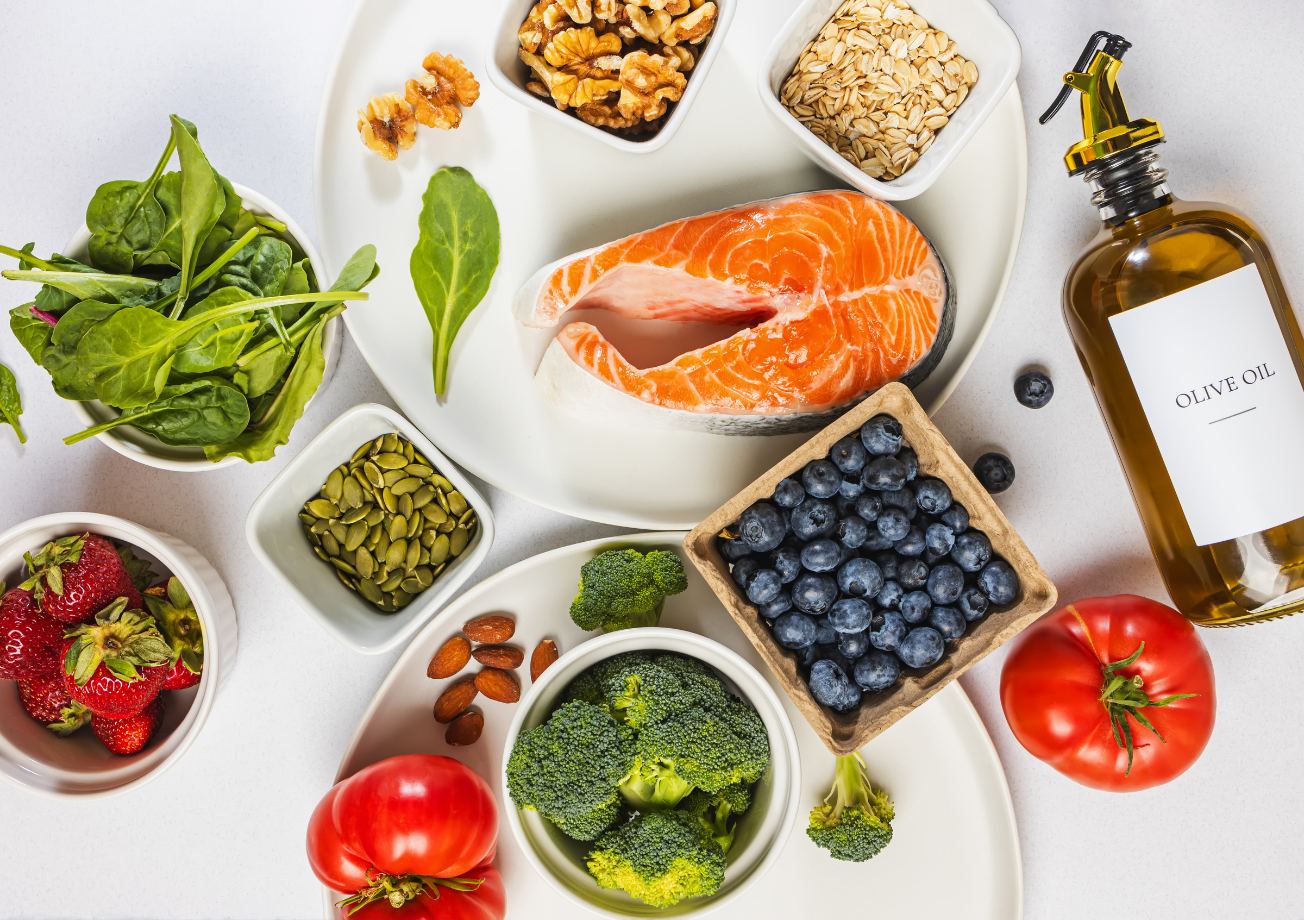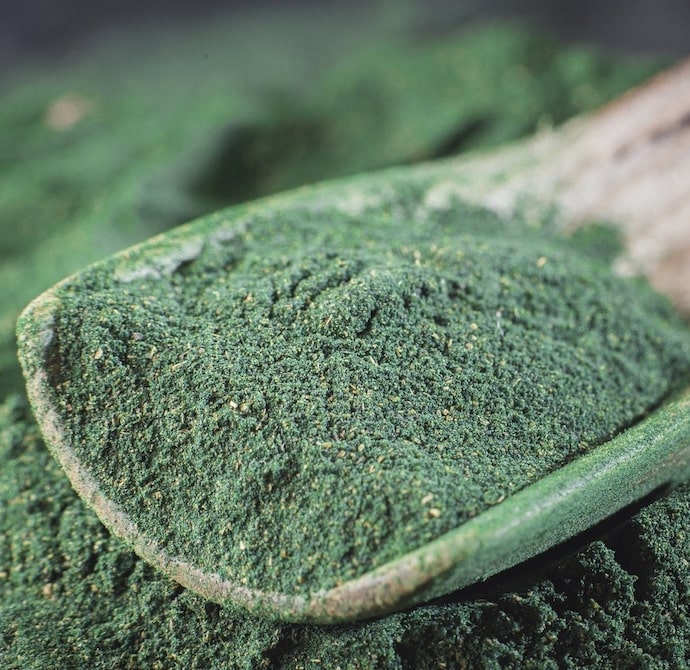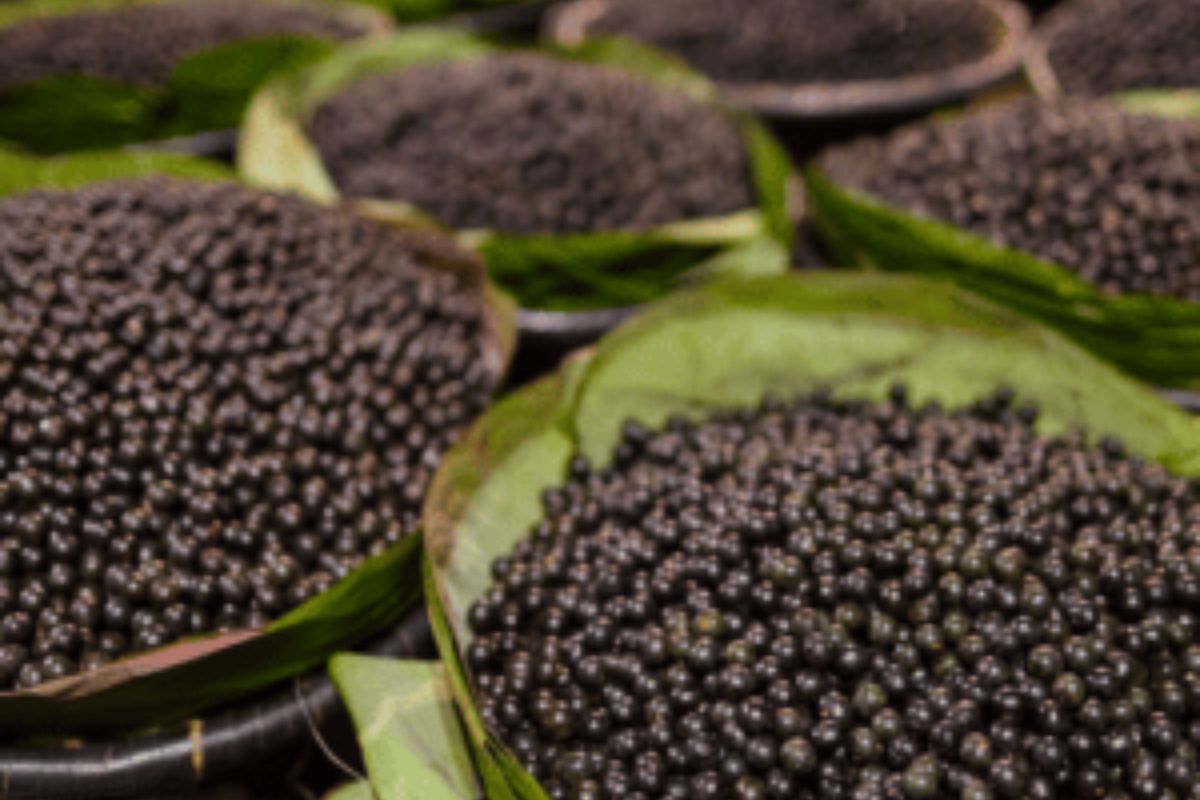Eating healthy can feel like a never-ending puzzle, especially with all the contradictory advice out there. But what if I told you that making simple changes to your diet could not only boost your mood but also lower your chances of developing chronic diseases? Anti-inflammatory superfoods are your allies in this journey, helping to calm your body’s defenses and keep illnesses at bay. Think about it: adding a few nutrient-dense foods to your meals can make a big difference over time. By exploring the world of these superfoods, you’ll discover delicious options that are just as enjoyable as they are beneficial—which means taking care of yourself can actually taste good!
Anti-inflammatory superfoods are nutrient-dense foods that can help reduce inflammation in the body, potentially lowering the risk of chronic diseases. Examples include fatty fish rich in omega-3 fatty acids, berries high in antioxidants, and turmeric known for its curcumin content—each contributing to overall wellness by combating oxidative stress and supporting immune function.
Causes of Inflammation
Inflammation is your body’s way of saying, “I need help!” When you get a cut or an infection, the body responds with a protective process. It recruits white blood cells to the area to heal it, resulting in redness, swelling, and warmth; that’s acute inflammation at work. However, problems arise when this response becomes chronic, lingering long after the initial threat has passed.
The first significant trigger of chronic inflammation is undoubtedly diet. Poor dietary choices, such as those high in sugar, refined carbohydrates, and trans fats, can significantly disadvantage you. Think of a double cheeseburger combined with a sugary soda. Studies have shown that these foods elevate levels of C-reactive protein (CRP), turning that protective response into a slow-burning fuse for chronic issues like heart disease and diabetes. In fact, a diet rich in red meats and processed sugars can significantly increase CRP levels—one more reason to choose healthful options instead.
Yet Diet isn’t the only villain in this story.
The second cause worth noting is physical activity—or rather, the lack thereof. Our bodies are designed for movement, and when we fall into sedentary lifestyles, inflammatory markers can rise as a consequence. Each day spent on the couch without moving can contribute to this issue. Want to fight back? Simple activities like walking or stretching not only get blood flowing but also help keep your inflammation levels in check.
But there’s more to the equation than just what we eat or how much we exercise.
Chronic stress plays a pivotal role as well; it has become something of a modern epidemic. With every added deadline or unexpected bill, our bodies release cortisol—a hormone that can ramp up inflammation if it stays elevated too long. This means that addressing stress through mindfulness or relaxation techniques is as important for your health as stocking up on super foods.
Finally, let’s not overlook the impact of our environment.
Environmental factors such as pollution and chemical exposure also contribute to chronic inflammation. Whether it’s smog from nearby highways or allergens in your own home, these irritants can provoke an inflammatory response that affects your overall health. Reducing exposure to harmful substances can help alleviate some of this invisible burden on your body.
Understanding these key triggers gives us insight into why making conscious dietary choices and lifestyle adjustments is essential. Transitioning away from inflammatory elements while weaving in vibrant health-promoting foods guides us toward greater well-being.
Science Behind Superfoods
Superfoods are more than just trendy buzzwords in the health community—they represent a category of foods scientifically proven to benefit our health significantly. These nutrient-dense powerhouses are packed with vitamins, minerals, and antioxidants that help combat oxidative stress and inflammation in our bodies. For instance, berries like blueberries and strawberries boast high levels of polyphenols, antioxidants that protect cells from damage and have been shown to lower inflammation markers significantly.
Flavonoids found in dark chocolate also play a crucial role in this fight against inflammation. These compounds not only provide rich flavor, but research indicates they can reduce inflammation similarly to traditional anti-inflammatory medications. It’s fascinating how nature equips some foods with such potent healing properties!
In fact, a study published in the Journal of Nutritional Biochemistry revealed that curcumin, the active ingredient in turmeric, has remarkably powerful anti-inflammatory effects, comparable to certain anti-inflammatory drugs—yet without the associated side effects typically linked to pharmaceuticals.
Moreover, studies demonstrate that a well-rounded diet featuring these superfoods can lead to measurable improvements in health. A meta-analysis showed that including omega-3 fatty acids—found abundantly in fatty fish—can reduce inflammatory markers by as much as 20% after consistent consumption over weeks. It’s this kind of impact we aspire for when we choose what goes on our plates.
By integrating these science-backed superfoods into your daily meals, you’re not just enhancing flavor; you’re taking proactive steps towards better health.
Now, let’s look closer at some top anti-inflammatory ingredients and how they fit into your diet seamlessly. Incorporating foods like green tea—rich in catechins known for their antioxidant properties—and walnuts, which are loaded with omega-3s and polyphenols, can support your body’s natural defenses against inflammation. When looking for ways to boost your meals, consider simple substitutions: switch out sugary snacks for a handful of mixed berries or add kale to your smoothies instead of refined carbohydrates.
Making these changes might seem small, but each choice adds up, creating a cumulative effect that can significantly reduce chronic inflammation over time. To understand which specific ingredients can amplify these benefits even further, we will explore key components next.
Top Anti-Inflammatory Ingredients
Berries are a powerful food that effectively combats inflammation. These little jewels are packed with antioxidants and vitamin C, which work together to lower oxidative stress in the body—a major contributor to chronic inflammation. Just picture plump, juicy blueberries, or vibrant strawberries adorning your breakfast bowl.
A notable study published in the American Journal of Clinical Nutrition found that consuming berries regularly can reduce CRP (C-reactive protein) levels by up to 30%. This statistic not only highlights their efficacy but also reminds us that a simple addition to our diet can yield significant health benefits over time.
Shifting from berries, let’s explore another remarkable source of anti-inflammatory properties: fatty fish.
Fatty fish, such as salmon and mackerel, are laden with omega-3 fatty acids. These essential fats are well-known for their ability to reduce inflammation throughout the body. Imagine incorporating a beautifully grilled salmon fillet into a nutritious salad—great taste paired with incredible health benefits! At Shaka Kitchen, we see our visitors light up when they try our “Grilled Salmon Salad.” It’s not just a meal; it’s a delicious way to fight inflammation and promote heart health simultaneously. The vibrant flavors blend seamlessly while offering nutritional powerhouse elements that your body craves.
Moving on to an age-old spice that deserves recognition.
Turmeric is another ingredient worth spotlighting. Known for containing curcumin, a bioactive compound celebrated for its anti-inflammatory prowess, turmeric has become increasingly popular in modern diets. You might have seen it pop up in various recipes, but it truly shines in beverages like our “Turmeric Ginger Smoothie.” By adding this bright yellow spice into your morning routine, you’re not only enhancing the flavor of your drink but infusing it with health benefits as well. This combination of ginger and turmeric creates a unique blend that may help ameliorate chronic inflammatory conditions while delivering a delightful taste.
Understanding these ingredients’ individual roles is essential. Next, we’ll examine how integrating these components into your meals can amplify their collective health benefits.
Health Benefits of Anti-Inflammatory Diet
Adopting an anti-inflammatory diet has numerous health advantages. Not only does it work wonders for our physical well-being, but it also plays a vital role in mental and emotional health. When we incorporate elements like fresh fruits, vegetables, whole grains, and healthy fats into our meals, the effects can be profound and far-reaching.
Reduces Risk of Chronic Diseases: The connection between chronic inflammation and diseases like heart disease, cancer, and diabetes is well documented. By embracing an anti-inflammatory diet, you are actively reducing your chances of developing these serious health issues. Think of it as a proactive approach: your body can gain strength and resilience against ailments merely through the choices you make at mealtime.
Studies suggest that eating plenty of nutrient-rich foods helps lower levels of inflammation in your body. For instance, fruits like berries and apples contain high levels of antioxidants, which combat oxidative stress—one of the triggers of inflammation. Additionally, colorful vegetables are packed with vitamins and phytochemicals that directly support overall health. This protective effect isn’t just theoretical; it’s backed by research showing a significant correlation between diets rich in these foods and a reduced incidence of chronic diseases.
Improves Mental Health
One lesser-known benefit is the diet’s positive impact on mental wellness. Nutrients like omega-3 fatty acids found in fatty fish (such as salmon) can work wonders for our mood. Research indicates that incorporating these fats into your meals can help battle conditions like depression and anxiety, revealing the intricate connection between what we eat and how we feel.
Dr. Sinvani emphasizes that “the study reflects significant clinical benefits for brain health linked to dietary habits.”
Thus, when you prioritize omega-3s along with antioxidant-rich fruits and vegetables in your daily meals, you’re not just nourishing your body—you’re also nurturing your mind. It’s about fueling yourself with the right elements to foster a balanced emotional state.
Enhances Joint Health
Joint inflammation is another area where dietary choices play a crucial role. Foods like turmeric, with its active component curcumin, combined with omega-3-rich fish, are known for their impressive anti-inflammatory properties. These ingredients can significantly reduce symptoms associated with arthritis and other joint-related issues.
Imagine enjoying a delicious dish seasoned with turmeric or savoring grilled salmon while simultaneously providing your body with compounds that help ease soreness and stiffness. It’s almost like having a natural remedy at every meal! Regularly integrating these anti-inflammatory foods not only enhances joint mobility but also contributes to long-term joint health.
Studies have shown that people who consume a diet high in anti-inflammatory foods experience a 20% reduction in mortality risk. Those numbers reflect not just a chance for longevity but an opportunity for better quality years. Therefore, integrating these foods into your daily routine is crucial for maintaining both physical vitality and mental clarity as you navigate life’s challenges.
With these benefits in mind, it becomes clearer how important it is to consider your dietary choices daily. Let’s explore how to effectively incorporate these principles into your routine for maximum impact.
Practical Tips for Daily Diet
Integrating anti-inflammatory foods into your diet doesn’t have to feel daunting. It can be as straightforward as switching out a few ingredients or trying something new each week.
For breakfast, think about how you can transform typical meals into nutritious powerhouses. Instead of plain cereal, whip up a berry-packed smoothie filled with fruits like blueberries and strawberries, both known for their rich antioxidant content. You could also make oatmeal more appealing by topping it with walnuts and a drizzle of honey; not only will it wake up your taste buds but also fuel your body with healthy fats and omega-3s.
As you sail through your day, lunchtime offers another chance to embrace these superfoods. Picture this: a vibrant salad bursting with leafy greens, creamy avocado, and a sprinkle of high-quality olive oil. Not only does this add flavor, but the monounsaturated fats from the olive oil are supportive of heart health while enhancing the absorption of fat-soluble vitamins from the vegetables. Feeling adventurous? Toss in some pomegranate seeds for an extra nutrient boost!
Dinner is a time when you can showcase your flavors and prioritize your health. One option to consider is cooking fatty fish like salmon, which is rich in omega-3 fatty acids and has been praised for its incredible anti-inflammatory properties. If you’re looking for a delicious alternative, try applying turmeric to roasted chicken to infuse your meal with color and health benefits. Don’t underestimate the power of spices; they can elevate even the simplest dishes.
Snacking should be fun and nutritious, too! Instead of reaching for chips or candy, keep a stash of nuts on hand—walnuts or pistachios are excellent choices as they pack anti-inflammatory benefits. And if you’re in the mood for something sweet, indulge in dark chocolate with at least 70% cocoa content. The antioxidants found in dark chocolate can help fight inflammation while satisfying your sweet tooth without overindulging.
At Shaka Kitchen, we believe in making healthy eating easily accessible. Our menu features dishes like the “Avocado & Walnut Salad,” perfectly embodying this philosophy. It’s an exquisite blend of taste and nourishment that showcases how simple it can be to make anti-inflammatory choices enjoyable.
As you begin to consciously integrate these superfoods into your diet, continue to explore creative ways to enjoy their diverse benefits while looking forward to the next section filled with delicious inspiration for incorporating these foods into delightful recipes.
Recipe Ideas for Superfoods
Here are some flavorful and easy-to-prepare recipes that showcase how simple it can be to incorporate anti-inflammatory superfoods into your daily routine.
Let’s start with Turmeric-Ginger Tea, a delightful way to foster wellness. The vibrant yellow hues of turmeric, combined with the zing of ginger, create a warming drink that not only comforts but also soothes inflammation.
To prepare it, begin by boiling water and adding fresh ginger slices, allowing the spicy aroma to fill your kitchen. Next, mix in a teaspoon of ground turmeric; this golden spice is renowned for its health benefits. Let the mixture simmer for about ten minutes, then strain and sweeten it with honey as desired. This soothing tea is a perfect start or end to your day, wrapping you in its gentle warmth.
Now that you’re warmed up with a comforting drink, let’s move on to something equally delicious yet more substantial—our Salmon Avocado Bowl.
This dish combines lean protein from salmon with nutrient-rich vegetables and healthy fats from avocado, making it a powerhouse of anti-inflammatory properties. Start by seasoning a salmon fillet with salt, pepper, and a drizzle of olive oil before cooking it until tender and flaky.
Meanwhile, slice up some ripe avocados, crisp cucumbers, and vibrant cherry tomatoes. These not only add color but also vital nutrients to your meal. For an added nutritional boost, prepare a bed of fluffy quinoa—its whole grain goodness offers dietary fiber that supports gut health. Assemble everything together with a generous drizzle of lemon juice for an extra burst of flavor. This bowl embodies the spirit of wholesome eating while tantalizing your taste buds.
At Shaka Kitchen, we take pride in offering dishes that celebrate both flavor and healthiness. Our menu showcases various recipes prioritizing anti-inflammatory ingredients without sacrificing taste.
While enjoying these delights contributes positively to your health journey, it’s equally important to be aware of potential risks and considerations related to certain ingredients.
Risks and Considerations
Though anti-inflammatory superfoods are often regarded as healthful additions to your diet, awareness of potential risks is crucial. Certain foods may cause adverse reactions in some individuals. For instance, allergies to nuts or fish can put certain people at serious risk, highlighting the need for caution when introducing new food items into your diet.
Additionally, it’s important to note that moderation is key. Overconsumption of certain superfoods like ginger or turmeric can lead to unexpected complications. Both ingredients boast incredible health benefits, but they possess potent bioactive compounds that could interfere with blood clotting if eaten in excessive amounts. This poses a problem for those taking specific blood-thinning medications or managing underlying health conditions. Thus, striking a balance is necessary for maximizing benefits without unwanted side effects.
It’s always best to check in with a healthcare provider before making significant adjustments to your eating habits, particularly if you have existing medical concerns or dietary restrictions. This ensures that you’re making informed choices that support your unique health profile.
At Shaka Kitchen, we emphasize well-balanced dishes carefully crafted to cater to diverse dietary needs. We take pride in providing an array of offerings that allow you to enjoy the goodness of superfoods without compromising safety or effectiveness. Our chefs are knowledgeable about food interactions and strive to create meals that promote overall health while considering individual preferences and tolerances.
Another consideration involves the quality of these superfoods. Not all sources are created equal; one should be mindful of where and how they obtain their ingredients. For example, pesticides used in agriculture can offset the positive impact of otherwise beneficial foods. When searching for anti-inflammatory options, always opt for organic whenever possible.
Ultimately, integrating anti-inflammatory superfoods into your diet can yield remarkable results if navigated carefully and responsibly. It’s about finding a harmonious balance between embracing their benefits and acknowledging the potential risks involved in your journey toward better health.
Check out our menu at Shaka Kitchen. Together, we can create dishes that support your wellness journey!



